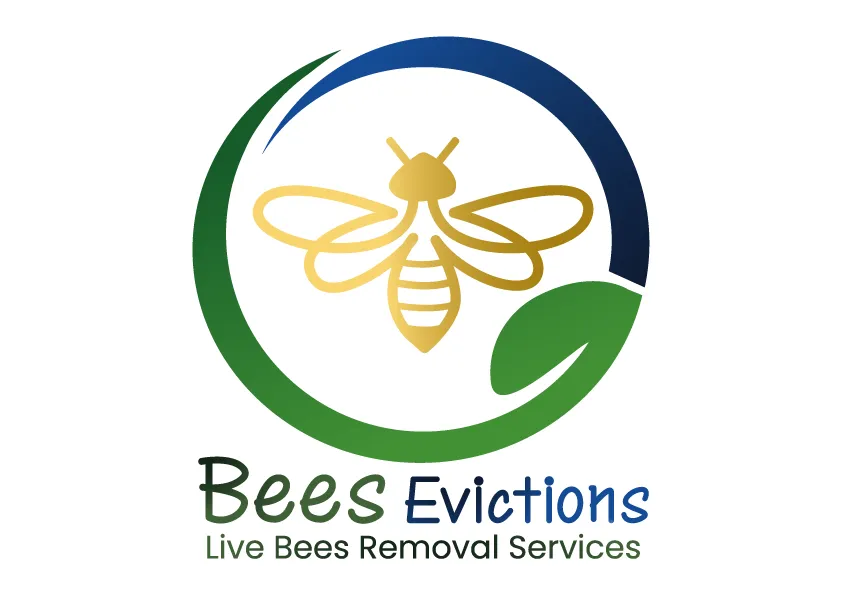Honey Bee vs. Bumblebee: Comparing & Valuing Pollinators
Home / Honey Bee vs. Bumblebee: Comparing & Valuing Pollinators

Honey Bee vs. Bumblebee

The world of bees is fascinating and diverse, with numerous species playing vital roles in our ecosystems. Honey bees and bumblebees are two of the most well-known and essential pollinators.
While they share some similarities, each species has distinct differences that make it unique. Understanding these differences is crucial for appreciating their roles in nature and the importance of conserving their populations.
Honey Bee vs. Bumblebee: Physical, Behavioral & Pollinating Characteristics
1. Physical Characteristics of the Tiny Pollinators

One of the most noticeable differences between honey bees and bumblebees is their appearance.
Honey bees are generally smaller, with a more streamlined and slender body. They have golden-brown bodies with black bands and a relatively smooth texture.
Conversely, bumblebees are larger and more robust, with a rounder and fuzzier appearance. Their bodies are covered in dense hair, which can be black, yellow, or orange. This gives them a distinctive and often more vibrant look than honey bees.
2. Behavior and Social Structure
Honey bees are well-known for their highly organized social structure. They live in large colonies comprising thousands of individuals, including a single queen, workers, and drones.
Honey bee colonies are perennial, meaning they can survive through multiple years. They communicate through a sophisticated dance language to relay information about food sources.
Bumblebees also live in colonies, but these are generally much smaller, usually consisting of 50 to a few hundred individuals. Bumblebee colonies are annual, with the colony dying out in late fall and only the newly mated queens hibernating through the winter to start new colonies in the spring.
Bumblebees are less rigid in their communication and foraging patterns than honey bees.
When Does the Pollinating Season Start for Bumblebee Vs Honey Bee?

Bumblebees leave hibernation after New Year's Eve. They are the primary pollinator, ensuring flowers bloom to secure food for the honey bee species.
During winter, trees are fruitless, leafless, and just naked branches. So, the bumblebees chew on those branches and stimulate blooming. They are the most vital type of bees since they ensure the other species get food after hibernation.
But bumblebees not only give food to other bees but also give humans food.
Once Albert Einstein wrote: “If the bee disappeared off the surface of the globe, then man would only have four years of life left. No more bees, no more pollination, no more plants, no more animals, and no more man”.
So, in other words, bees don’t harm; they give life.
After waking from hibernation, honey bees are active from February to October. During this period, bees start laying eggs for the new worker bees.
Before hibernation, the queen bee and its group killed all the worker bees to survive the winter (because there was a lack of food).
The surviving bees create a new hive, dividing the original hive into two. The new bees must migrate with a new queen during March and April. Sometimes, these new hives end up in houses, trees, cars, or any other space they see suitable for living.
How Are the Pollination and Foraging Habits of Bumblebee vs Honey Bee?

Both honey bees and bumblebees are excellent pollinators, but they have different foraging behaviors and preferences.
Honey bees are more efficient in their foraging because they can communicate specific locations of food sources to their hive mates. They tend to focus on one type of flower at a time, enhancing their effectiveness as pollinators for those plants.
Bumblebees, however, are known for their ability to perform “buzz pollination.” This involves grabbing onto a flower and vibrating their bodies to dislodge pollen. This technique is particularly effective for pollinating certain crops, such as tomatoes and blueberries, which honey bees are less adept at pollinating.
Bumblebees can also forage in cooler and wetter conditions than honey bees, making them valuable pollinators in various climates.
Honey Production: Which Bee Makes Our Life Sweeter?

One of the most significant distinctions between the two species is honey production.
Honey bees are renowned for their ability to produce and store large quantities of honey. They collect nectar from flowers, which is then enzymatically transformed and dehydrated to create honey.
This honey is a crucial food source for the colony, especially during winter when foraging is impossible.
Bumblebees produce honey but in much smaller quantities. The small amounts of honey they produce are primarily for immediate consumption by the colony and are not stored in the same way as honey bee hives. Therefore, bumblebees do not contribute to honey production for human use.
How to Conserve Our Buzzy Friends?
Both honey bees and bumblebees are essential for pollination, which is critical for the reproduction of many plants and the production of numerous crops.
However, both species face significant habitat loss, pesticides, disease, and climate change threats. The decline in their populations can have severe consequences for biodiversity and agriculture.
Conservation efforts are crucial to protecting these vital pollinators. Some ways to help are planting various flowers, reducing pesticide use, and supporting habitat restoration projects.
Additionally, promoting awareness and research on bee health can contribute to the conservation of honey bees and bumblebees.
Bee Environmentally Friendly by Relocating Bees!

Honey bees and bumblebees are both fascinating and essential creatures in our ecosystems. While they share some commonalities as pollinators, their differences in physical characteristics, behavior, and contributions to honey production highlight the unique roles each plays.
By understanding and appreciating these differences, we can better support their conservation and ensure the health and diversity of our natural world.
Bee part of the change by relocating, not killing bees.
Honey bees and bumblebees are fantastic pollinators, but unwanted beehives can be a concern. Here is where Bee Evictions can help you with our professional honey bee removal services.
Our expert team prioritizes safe, humane relocation of the entire colony, including honeycomb.
We have 26+ years of experience in this industry, so we’ll use specialized techniques to capture the bees and find them a new, permanent home. This ensures your property is bee-free while protecting these vital insects.
Let’s keep our buzzing buddies buzzing in the right places!
